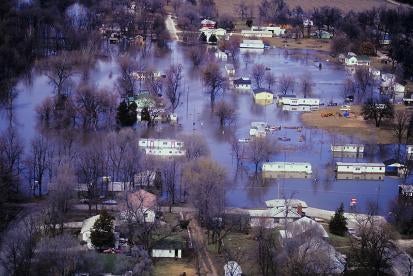The floodwaters from the aftermath of Hurricane Harvey have receded, and now it’s time to focus on the overwhelming task of getting back to normal, that includes protecting your property values. Below are helpful steps to do just that.
Step 1 – Notify Mortgage and Insurance Company and FEMA: If you have flood insurance, file a claim with the insurance company and schedule an appointment with the insurance adjuster. If you did not have insurance, file a claim with FEMA and schedule an appointment with a FEMA adjuster. This adjuster appointment should occur prior to conducting any demolition or rebuilding; however, with the extent of the damage to the Houston area, this may not be feasible since it may take weeks to schedule such appointment. In that case, document the damage, as discussed below. Filing a flood insurance claim will not prevent you from filing a FEMA claim; however, FEMA may require you to file an insurance claim prior to filing with FEMA.
Step 2: Document the Damage: Now that all claims have been filed, owners need to take steps to prevent further damage, such as patching or tarping damaged roofs and boarding up broken windows. Separate salvageable items and store in a safe dry place. Prior to any demolition or rebuilding, take photos and videos of the damage, including any standing water remaining in the home, visible floodwater level lines, structural damage and all discarded items. Ensure those photos and videos include a date/time stamp. Make a list of all damaged items, including the value, date of purchase and receipts, if possible, and going forward, be sure to keep copies of all receipts, work orders, contractor agreements, and all other items relating to clean up and rebuilding.
Step 3: Air Out, Tear Out, Clean Out and Dry Out(i): Once documentation has been completed and stored in a safe place, begin airing by opening windows, all doors, including closet doors, and all cabinets. Next, the property owner should tear out and remove all damaged furniture, carpet, flooring, sheetrock, cabinets and other porous items and furniture. Unlike Step 4 below, a property owner may do this on their own or hire a contractor to perform the work. No additional certification is required to “muck and gut” your property, and mucking out your property will not prevent you from obtaining a mold certification, discussed below. If your property is located in the City of Houston, report your debris to the Houston Solid Waste Management Department (“HSWMD”) by dialing 311 or report at Houston311.org. The HSWMD requests that all debris be placed on the sidewalk or edge of the property before the curb, and to be separated into six piles for pick up: (1) vegetative debris, (2) construction and demolition debris, (3) appliances, (4) electronics, (5) household hazardous waste, and (6) normal household trash(ii). Before any rebuilding starts, you or your contractor should follow all local ordinances and obtain all required permits prior to construction. It is important to note that the Texas Real Estate Commission’s Seller’s Disclosure Notice (“Disclosure Notice”) specifically asks the seller if they are “aware of any room additions, structural modifications, or other alterations or repairs made without necessary permits or not in compliance with building codes in effect at that time”(iii), so it is important to ensure that all ordinances are followed and permits obtained. The Department maintains a list of licensed mold remediation contractors on their website(iv).
Step 4: Mold Assessment and Remediation(v) : A property owner may treat their own property for mold; however, it is strongly recommended that you hire a licensed mold and remediation company. A mold remediation company will evaluate your property to determine if mold is present and at what levels, and if mold is present the company will remediate and remove the mold. Unlike Step 3, your insurance and/or mortgage company may require you to obtain a Certificate of Mold Damage Remediation (“CMDR”), which verifies that any mold located on the property was removed correctly. The Texas Mold Assessment and Remediation Rules (“TMARR”) require that all mold remediation companies/contractors have a license issued by the Texas Department of Health Services (the “Department”); however, the Department has waived such requirements for mold remediation and assessment companies for the duration of the disaster declaration in Harris and surrounding counties. Suspending the licensing requirement will allow those experienced remediation companies that are not licensed in Texas to provide necessary services. In lieu of licensure, unlicensed companies and persons who wish to conduct work in the Houston area may register with the Department. An unlicensed mold remediation or assessment company can provide mold services and assessment and can verify whether mold is present; however, unlicensed remediation or consultants cannot issue a CMDR. The Department pointed out that those licensed in Texas should inform property owners that using the waiver process may cause issues with insurance claims, so it is recommended to hire a licensed mold remediation or consultant. The Department maintains a list of licensed mold remediation contractors on their website(vi).
Step 5: Seller’s Disclosure: Should you decide to sell your home now or in the future, it is important to note that Texas homeowners are required to disclose previous flood damage and whether the property is located in a 100 year flood plain on the Disclosure Notice(vii). This form specifically asks the seller if they are:
– “aware of any previous flooding” and
– “the property is located in 100 Year Flood Plain.”
The above steps are things that you as an owner can do to protect the value of your property. Unfortunately, many Houston area homes will see low property values for the next few years. The drop in value will depend on the location of the property and the extent of damage caused by the flooding. For now, we are all in the same boat, still riding out the effects of our dear friend Harvey.
(i) “FEMA – Initial Restoration for Flooding Buildings” http://www.floods.org/PDF/FEMA_InitialRestorationFloodBldg.pdf
(ii) See http://www.houstontx.gov/solidwaste/debris_08302017.html
(iii) Texas Property Code § 5.008 and a copy of the disclosure form is available at https://www.trec.texas.gov/sites/default/files/pdf-forms/OP-H_0.pdf.
(iv) See https://vo.ras.dshs.state.tx.us/datamart/login.do;jsessionid=39CFC0D4B8F83F005338D87285E544C5.i-03a38ec2506c5b8dd
(v) Texas Department of State Health Services, “Emergency Guidance on Mold Remediation Under the Governor’s Disaster Declaration” and “Q & A on Mold Remediation Related to Hurricane Harvey”; https://www.dshs.texas.gov/mold/
(vi) See https://vo.ras.dshs.state.tx.us/datamart/login.do;jsessionid=39CFC0D4B8F83F005338D87285E544C5.i-03a38ec2506c5b8dd
(vii) Texas Property Code § 5.008 and a copy of the disclosure form is available at https://www.trec.texas.gov/sites/default/files/pdf-forms/OP-H_0.pdf.






 i
i


